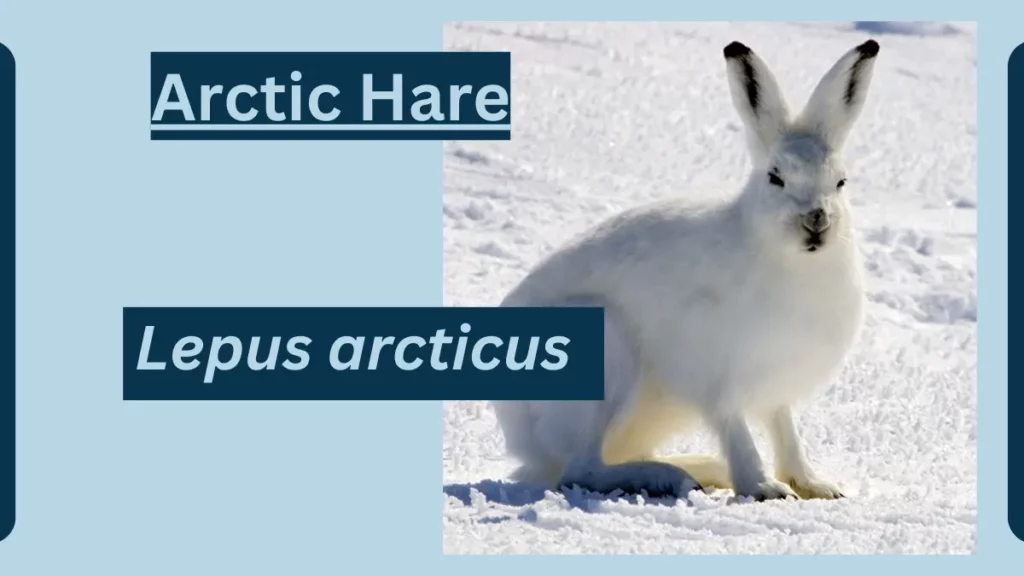Arctic Hare Animal Facts
October 13, 2023
The Arctic Hare is a cold-weather adapted species of hare known for its ability to survive in the harsh environments of the Arctic tundra.

Arctic Hare
Here are some facts about Arctic Hare:
| Topic | Information |
|---|---|
| Scientific Classification | – Kingdom: Animalia |
| – Phylum: Chordata | |
| – Class: Mammalia | |
| – Order: Lagomorpha | |
| – Family: Leporidae | |
| – Genus: Lepus | |
| – Species: Lepus arcticus | |
| Origins and Distribution | The Arctic Hare is found in the Arctic and subarctic regions of North America, Europe, and Asia. It is well adapted to the extreme cold of the tundra and other high-latitude habitats. |
| Characteristics | Mammal’s Anatomy and Appearance: Arctic Hares are known for their thick, white fur, which provides insulation in cold environments. In the summer, their fur may transition to a grayish-brown color. They have large, strong hind legs for running. |
| Size: They are typically medium-sized hares, with adults weighing between 5 to 12 pounds (2.3 to 5.4 kilograms) and measuring about 20 to 28 inches (51 to 71 centimeters) in length. | |
| Behavior and Lifestyle | Arctic Hares are adapted to the extreme cold and have developed behaviors to cope with it. They are crepuscular, meaning they are most active during dawn and dusk, and they often dig burrows in the snow to stay warm. |
| Diet and Feeding Habits | They are herbivores, primarily feeding on a variety of plants, lichen, and other vegetation found in the Arctic tundra. They have specialized adaptations for digesting fibrous plant material. |
| Reproduction and Life Cycles | Arctic Hares reproduce sexually, with females giving birth to litters of typically two to eight leverets (young hares). They have a short gestation period of around 50 to 60 days. |
| Predators and Threats | Arctic Hares have various natural predators, including Arctic foxes, wolves, and birds of prey. Their white fur provides camouflage against the snowy backdrop, but they remain vulnerable to predators. |
| Interesting Facts and Features | Color Change: The fur of Arctic Hares changes color with the seasons, helping them blend into the environment during both summer and winter. |
| – Survival in Extreme Cold: These hares are well adapted to extremely cold environments, and their burrowing behavior helps them stay warm in the frigid Arctic winters. | |
| Relationship with Humans | Arctic Hares have limited interactions with humans due to their remote habitat. They are not typically kept as pets, and their primary significance to humans is in their ecological role in the Arctic ecosystem. |
| Conservation Status and Life Today | The Arctic Hare is not considered endangered, and its populations are generally stable. However, like many Arctic species, they may face challenges from climate change and habitat disruption. Conservation efforts aim to protect Arctic ecosystems. |
File Under:

 written by
written by 




Leave a Reply